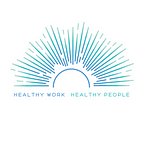APA-NIOSH Work, Stress and Health Conference: Contemporary Challenges and Opportunities — Marnie Dobson Zimmerman, Ph.D.
“Working on Empty” (WOE) is a multimedia project on how the U.S. workplace is making Americans sick and what must change to protect the health of our workforce.
___________________________________________________________________
Every two years we attend the Work, Stress and Health conference where we present our own research and discuss our colleagues’ research, all focused on understanding and improving work and health. The conference is jointly convened by the American Psychological Association (APA), the National Institute for Occupational Safety and Health (NIOSH) and the Society for Occupational Health Psychology (SOHP), and attracts several hundred scientists and health professionals from all over the world including occupational health psychologists and epidemiologists, as well as labor activists.
This year in Minneapolis, MN, the conference theme, “Contemporary Challenges and Opportunities,” promoted an array of panels and symposia that dealt with everything from “Workplace Mistreatment and Bullying” to “Quality of Work-Life and Work-Family Balance” to “Measurement Challenges and Opportunities Regarding Burnout” to “Sleep, Fatigue and Work Scheduling” to “Healthy Work Design and Well-Being” and “Total Worker Health.” There were dozens of panels and discussions, as well as hundreds of papers and posters shared. (Conference proceedings and abstracts are available for download at www.apa.org/wsh.)
Some highlights…
NIOSH’s Total Worker Health[TM] program and the challenges facing “intervention research” — a type of research that evaluates actual changes to the workplace that can help workers — was a dominant theme in this conference. NIOSH introduced the Total Worker Health program in 2011, and it is defined as:
“…policies, programs, and practices that integrate protection from work-related safety and health hazards with promotion of injury and illness prevention efforts to advance worker well-being.”[i]
It is an innovative idea that has gathered much interest from business, labor and researchers alike — and not without its challenges and opportunities. Members of the WOE team (and others) have been somewhat critical in the past of a tendency for many TWH programs and research studies to focus more on individual-level behavioral changes, or “health promotion,” rather than changing work to help workers whose behavior and well-being might actually be affected by the work itself. At this conference and in the last year or two, NIOSH has committed to more fully address the organization of work as a “social determinant” (i.e. cause) of health and illness, in its support of researchers and its encouragement of businesses to adopt Total Worker Health programs.
There were many exciting examples of researchers, employers and unions beginning to develop interventions that tackle working conditions, organizational policies, leadership, and work-family issues. A particularly interesting highlight was the symposium “MAPE: a union that stops workplace bullying, protects workers, compels employer engagement.” The Minnesota Association of Public Employees teamed up with The Workplace Bullying Institute to feature this public-sector union’s successful campaign against workplace bullying.[ii]
Key members of the WOE team (including myself) proudly presented our newly minted, 11-minute Working on Empty video (available on workingonempty.org) during a lively panel discussion. We plan to make a full-length documentary film for a U.S. audience that shows the connections between unhealthy work and poor health in working people. Our teaser was well received by the audience. There were many positive responses and suggestions made by participants, which we plan to incorporate into the documentary film.
The film, in tandem with our Healthy Work Agenda, articles and other parts of our multimedia project, are intended to promote a healthy workplace.[iii] Our project complements and is closely aligned with the positive work being done by the APA’s Psychologically Healthy Workplaces Awards program, which aims to engage employers and employees in efforts to foster health and well-being, while enhancing organizational performance and productivity.[iv] We look forward to continuing to work closely with both NIOSH and APA.
To support the WOE movement:
- Share this article with a friend or a colleague.
- Connect: Facebook & Twitter.
- Visit: workingonempty.org.
- E-mail: WorkingonEmptyDoc@gmail.com
With your help, we will have created more than hope — we’ll have cemented lasting, positive change in the name of healthy working conditions.
Marnie Dobson Zimmerman, Ph.D., WOE Associate Producer of Research and Associate Director of the Center for Social Epidemiology, is a medical sociologist and a work stress researcher for more than 15 years, studying the effects of work organization on worker stress and health. She has worked to give voice to many worker populations, interviewing and conducting focus groups with firefighters, bus drivers, hotel room cleaners, communication workers, publishing academic research articles and co-editing the book Unhealthy Work: Causes, Consequences, Cures. (Baywood, 2009) (LinkedIn, Twitter)
[i] https://www.cdc.gov/niosh/twh/totalhealth.html
[ii] https://www.mape.org/my-mape/anti-bullying-toolkit/advice-members/health-harm-and-effects
[iii] http://workingonempty.org/wp-content/uploads/2017/03/working-on-empty-healthy-work-agenda-2017.pdf
